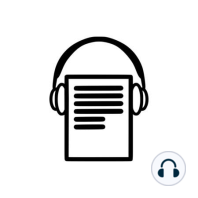20 min listen

Lis1 relieves cytoplasmic dynein-1 auto-inhibition by acting as a molecular wedge
Lis1 relieves cytoplasmic dynein-1 auto-inhibition by acting as a molecular wedge
ratings:
Length:
20 minutes
Released:
Oct 11, 2022
Format:
Podcast episode
Description
Link to bioRxiv paper:
http://biorxiv.org/cgi/content/short/2022.10.10.511666v1?rss=1
Authors: Karasmanis, E. P., Reimer, J. M., Kendrick, A. A., Rodriguez, J. A., Truong, J. B., Lahiri, I., Reck-Peterson, S. L., Leschziner, A. E.
Abstract:
Cytoplasmic dynein-1 transports many intracellular cargos towards microtubule minus ends. Dynein is autoinhibited and undergoes conformational changes to form an active complex, consisting of one or two dynein dimers, the dynactin complex and activating adaptor(s)1,2. The Lissencephaly 1 gene, LIS1, is genetically linked to the dynein pathway from fungi to mammals and is mutated in patients with the neurodevelopmental disease lissencephaly3-5. Lis1 is required for active dynein complexes to form6-10, but how it does so is unclear. Here, we present a structure of two dynein motor domains with two Lis1 dimers wedged in-between. The contact sites between dynein and Lis1 in this structure, termed "Chi", are required for Lis1s regulation of dynein in Saccharomyces cerevisiae in vivo and the formation of active human dynein-dynactin- activating adaptor complexes in vitro. We propose that this structure represents an intermediate in dyneins activation pathway, revealing how Lis1 relieves dyneins autoinhibited state.
Copy rights belong to original authors. Visit the link for more info
Podcast created by Paper Player, LLC
http://biorxiv.org/cgi/content/short/2022.10.10.511666v1?rss=1
Authors: Karasmanis, E. P., Reimer, J. M., Kendrick, A. A., Rodriguez, J. A., Truong, J. B., Lahiri, I., Reck-Peterson, S. L., Leschziner, A. E.
Abstract:
Cytoplasmic dynein-1 transports many intracellular cargos towards microtubule minus ends. Dynein is autoinhibited and undergoes conformational changes to form an active complex, consisting of one or two dynein dimers, the dynactin complex and activating adaptor(s)1,2. The Lissencephaly 1 gene, LIS1, is genetically linked to the dynein pathway from fungi to mammals and is mutated in patients with the neurodevelopmental disease lissencephaly3-5. Lis1 is required for active dynein complexes to form6-10, but how it does so is unclear. Here, we present a structure of two dynein motor domains with two Lis1 dimers wedged in-between. The contact sites between dynein and Lis1 in this structure, termed "Chi", are required for Lis1s regulation of dynein in Saccharomyces cerevisiae in vivo and the formation of active human dynein-dynactin- activating adaptor complexes in vitro. We propose that this structure represents an intermediate in dyneins activation pathway, revealing how Lis1 relieves dyneins autoinhibited state.
Copy rights belong to original authors. Visit the link for more info
Podcast created by Paper Player, LLC
Released:
Oct 11, 2022
Format:
Podcast episode
Titles in the series (100)
Metabolite profiling and cytotoxic activity of Andean potatoes: polyamines and glycoalkaloids as potential anticancer agents in human neuroblastoma cells in vitro by PaperPlayer biorxiv cell biology